Artificial Intelligence (AI) has changed the way we live, work and interact with technology. AI is influencing the future by innovations like voice assistants and self driving cars etc. It has brought technological changes to industries, by automating complex tasks and enhancing decision making processes. But what is Artificial Intelligence and how does it work? This guide explains AI in simple terms with real world examples and applications.
What is Artificial Intelligence?
Artificial Intelligence refers to computer systems that can perform tasks that usually require human intelligence. These tasks include learning, problem solving, decision making and recognizing patterns. AI can analyze data, make decisions and improve over time without direct human input. It operates using complex algorithms and machine learning techniques that enables it to recognize patterns, process language and perform automation at an large scale.
Main Features of AI:
- Machine Learning (ML) – AI can learn from data and improve over time.
- Natural Language Processing (NLP) – AI understands and processes human language.
- Computer Vision – AI interprets images and videos.
- Automation – AI performs repetitive tasks without human intervention.
- Deep Learning – AI mimics the human brain with artificial neural networks to recognize patterns.
- Predictive Analytics – AI forecasts trends based on past data.
- Cognitive Computing – AI simulates human thought processes for decision making.
- Robotics – AI powered robots perform physical tasks in manufacturing, healthcare and logistics.
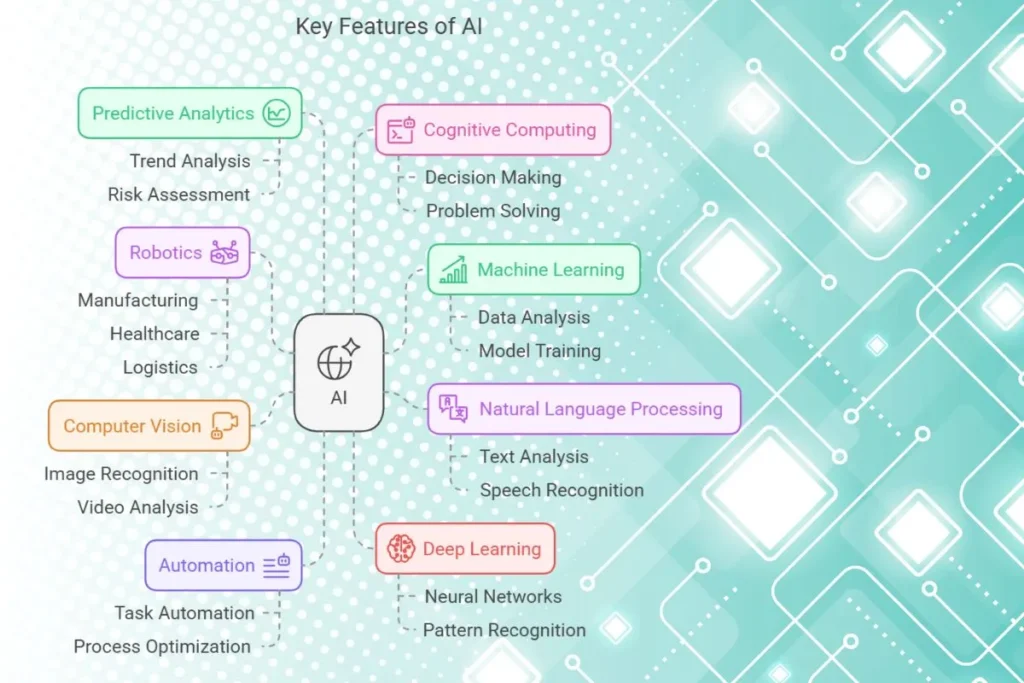
Examples of AI in Daily Life:
- Voice Assistants – Siri, Alexa and Google Assistant respond to voice commands.
- Chatbots – AI-powered bots provide customer support on websites.
- Recommendation Systems – Netflix, YouTube and Spotify suggest content based on user behavior.
- Fraud Detection – Banks use AI to identify unusual transactions.
- Smart Home Devices – AI powered thermostats adjust temperatures automatically.
- AI in Healthcare – AI assists in diagnosing diseases and suggesting treatments.
- Autonomous Vehicles – AI enables self driving cars to navigate roads safely.
- Language Translation – AI powered apps like Google Translate help break language barriers.
- AI in Social Media – AI curates personalized content feeds and detects inappropriate content.
AI is everywhere, from social media feeds to smart home devices, making everyday life more convenient and efficient.
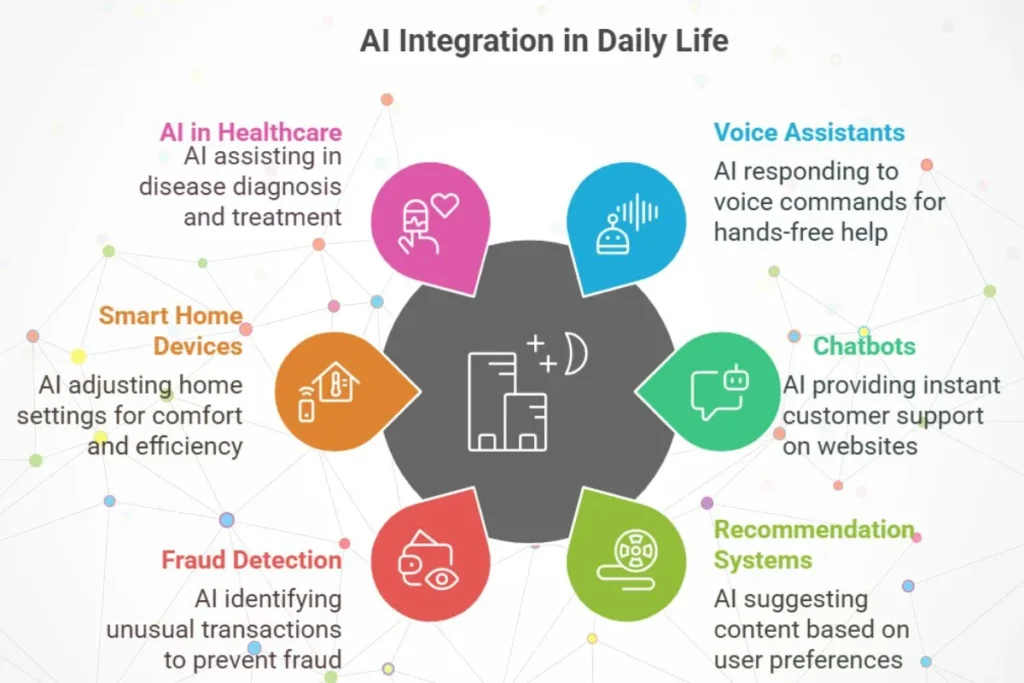
How Does Artificial Intelligence Work?
AI works by analyzing data, identifying patterns and making decisions based on algorithms. Here is a simple breakdown of how AI functions:
1. Data Collection
AI systems need data to learn. This data comes from different sources, including:
- Websites
- Sensors (IoT devices)
- Databases
- Social Media
- Customer Interactions
- Medical Records
- Surveillance Cameras
- E-commerce Transactions
2. Data Processing
Once data is collected, AI processes it using algorithms. These algorithms help the system to identify trends and patterns. The quality and amount of data directly affect the performance of AI. Data processing means to filter, structure and analyze the raw data to extract meaningful information.
3. Model Training
AI models are trained using machine learning techniques. The more data AI processes, the better it becomes at making predictions.
- Supervised Learning – AI learns from labeled data (e.g., an email marked as spam or not spam).
- Unsupervised Learning – AI finds patterns in data without predefined labels.
- Reinforcement Learning – AI improves by trial and error (e.g., AI in gaming and robotics).
- Deep Learning – AI uses artificial neural networks to recognize complex patterns and improve decision making.
4. Decision Making
Once trained, AI applies its knowledge to make predictions or automate tasks.
AI in self driving cars analyzes road conditions, detects obstacles and decides when to stop or turn. Similarly, AI powered trading systems analyze stock market trends and execute trades in milliseconds.
5. Continuous Learning
AI keeps improving by learning from new data. This allows it to adapt to changing environments and improve accuracy. The more AI interacts with real world data, the more smarter it becomes. AI powered systems constantly refine their models to enhance performance over time.
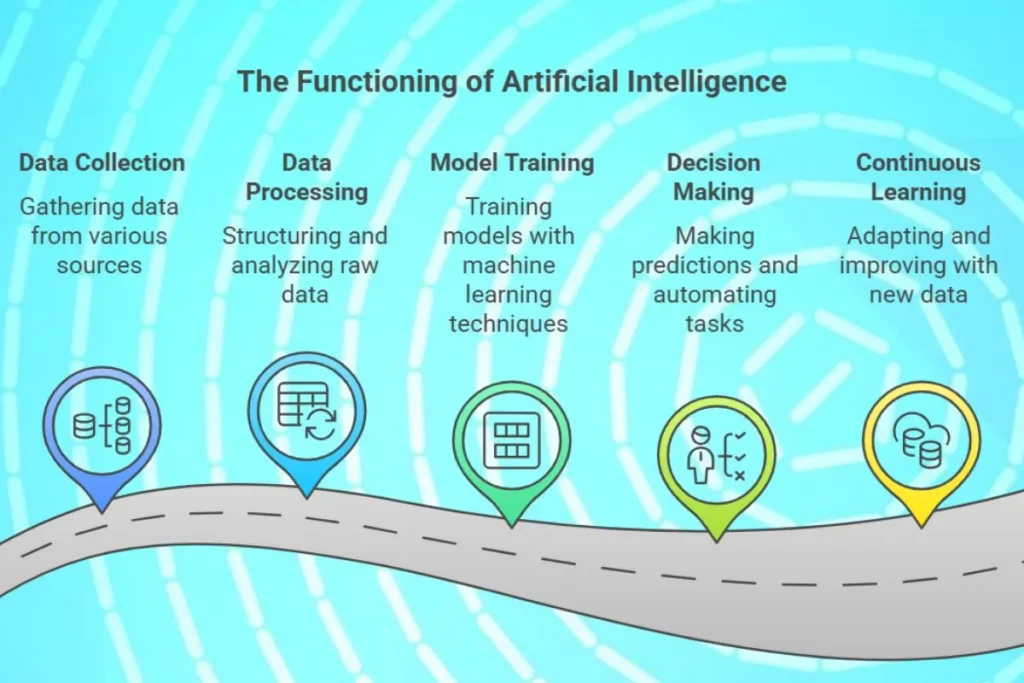
Types of AI
AI is categorized into different types based on capability and functionality:
1. Based on Capability
- Narrow AI (Weak AI) – Performs specific tasks (e.g., Google Search, voice assistants).
- General AI (Strong AI) – Has human like intelligence (not yet achieved).
- Super AI – A future concept where AI surpasses human intelligence.
2. Based on Functionality
- Reactive AI – Responds based on predefined instructions (e.g., chess playing AI).
- Limited Memory AI – Learns from past experiences (e.g., self driving cars).
- Theory of Mind AI – Understands emotions and social interactions (under research).
- Self Aware AI – AI with consciousness (currently theoretical).
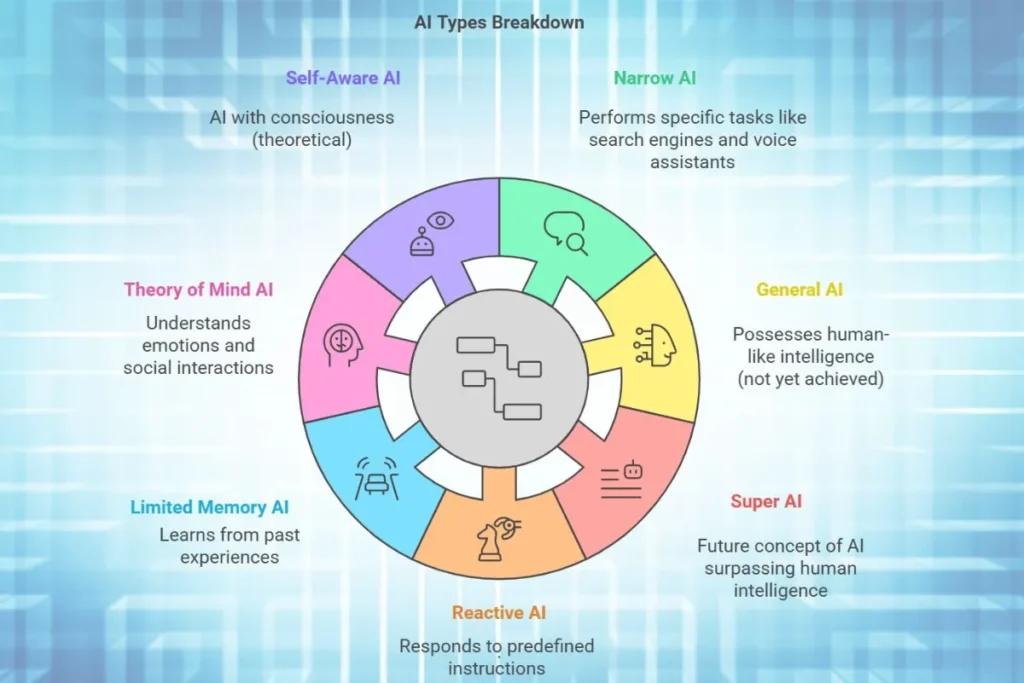
Real World Applications of AI
1. Healthcare
- AI diagnoses diseases from medical images.
- AI chatbots assist patients with health inquiries.
- Wearable devices track health metrics.
- AI predicts disease outbreaks.
- AI speeds up drug discovery and research.
- AI powered robotic surgeries improve precision and efficiency.
2. Finance
- AI detects fraudulent transactions.
- AI powered chatbots handle banking inquiries.
- AI predicts stock market trends.
- AI automates credit scoring and loan approvals.
- AI assists in algorithmic trading and financial risk assessment.
3. Retail & E-commerce
- AI recommends products based on shopping history.
- AI chatbots provide customer service.
- AI manages inventory efficiently.
- AI personalizes shopping experiences.
- AI enables cashier less stores.
- AI assists in demand forecasting and warehouse automation.
4. Transportation
- AI powers self driving cars.
- AI optimizes traffic flow in smart cities.
- AI predicts maintenance needs for vehicles.
- AI enhances navigation apps.
- AI improves airline scheduling and operations.
- AI streamlines logistics and supply chain management.
5. Entertainment
- AI suggests movies and music based on user preferences.
- AI generates realistic characters in video games.
- AI creates deepfake videos.
- AI writes scripts and generates content for media.
- AI enhances visual effects in movies.
- AI powers virtual influencers and digital avatars.
Conclusion
Artificial Intelligence has transformed industries and our everyday life. By understanding how AI works, we can use it effectively. AI has its benefits more than its risks when used responsibly. Staying informed about AI advancements ensures we can make the most of its potential. AI will continue to develop and influence how we work, communicate and solve problems.
AI is the future and learning about it today prepares us for tomorrow.

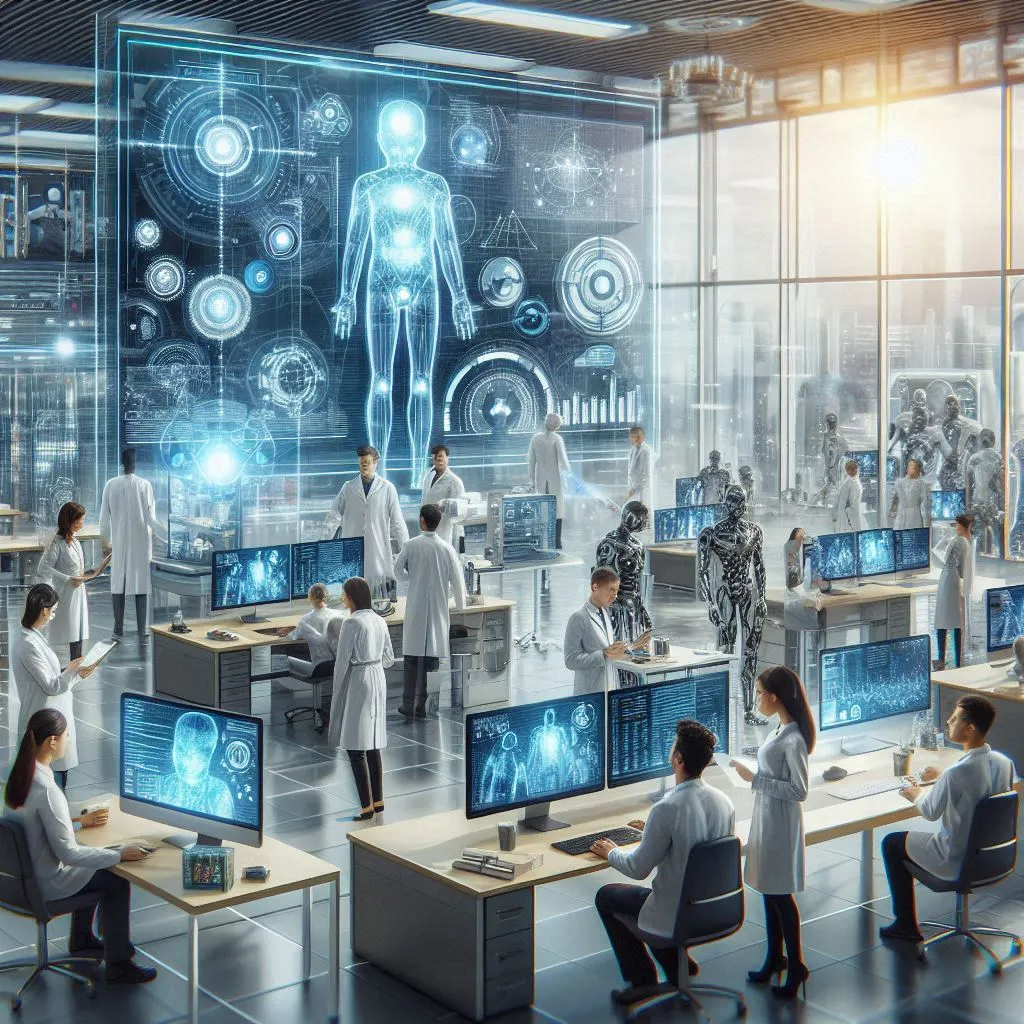
Thanks for sharing. I read many of your blog posts, cool, your blog is very good.